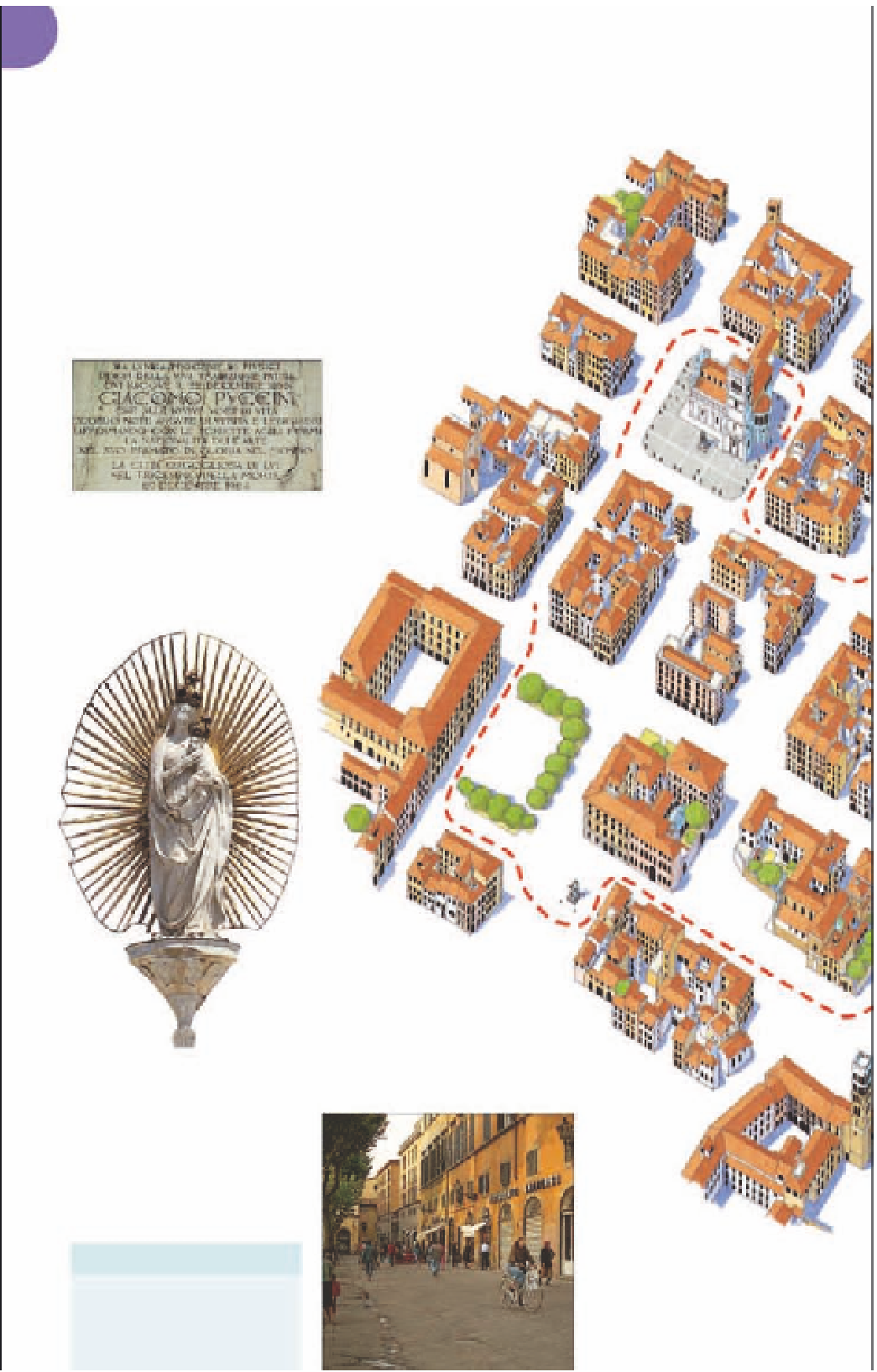Travel Reference
In-Depth Information
Street-by-Street: Lucca
q
Lucca became a colony of ancient Rome in 180 BC, and
the town's Roman legacy is still evident in the regular
grid pattern of its streets. The remarkable elliptical
shape of the Piazza del Mercato
(see p169)
is a survival
of the amphitheatre. The name of the church of San
Michele in Foro indicates that it stands beside the
Roman forum, laid out as the city's main square in
ancient times and still serving that function to this day.
San Michele is just one of Lucca's many churches
built in the 12th and 13th centuries in the
elaborate Pisan-Romanesque style.
Most of
the Renaissance
palazzi of Piazza San
Michele are now offices.
Casa di Puccini
This plaque marks the
birthplace of Giacomo Puccini
(1858-1924), composer of some
of the world's most popular operas.
The Palazzo Ducale
, once
home to Lucca's rulers, has
a Mannerist colonnade by
Ammannati (1578).
.
San Michele in Foro
The Madonna on the south-
west corner of the church is
a copy of the original inside,
carved by Matteo Civitali
(1436-1501).
San Giovanni
(1187)
Piazza
Napoleone
The square is named after
Napoleon, whose sister,
Elisa Baciocchi, was ruler
of Lucca (1805-15). The
statue is of her successor,
Marie Louise de Bourbon.
STAR SIGHTS
.
San Martino
. San Michele
in Foro













































